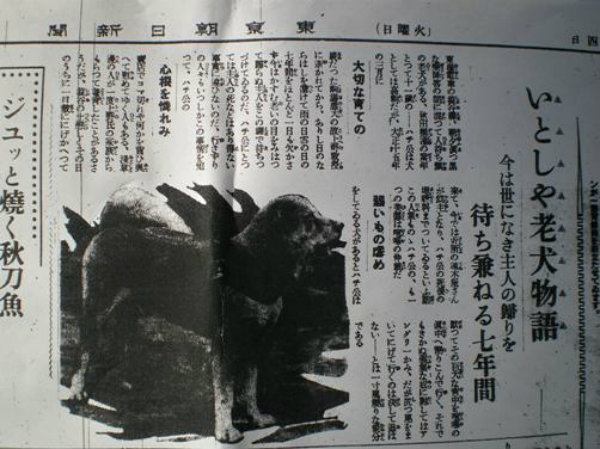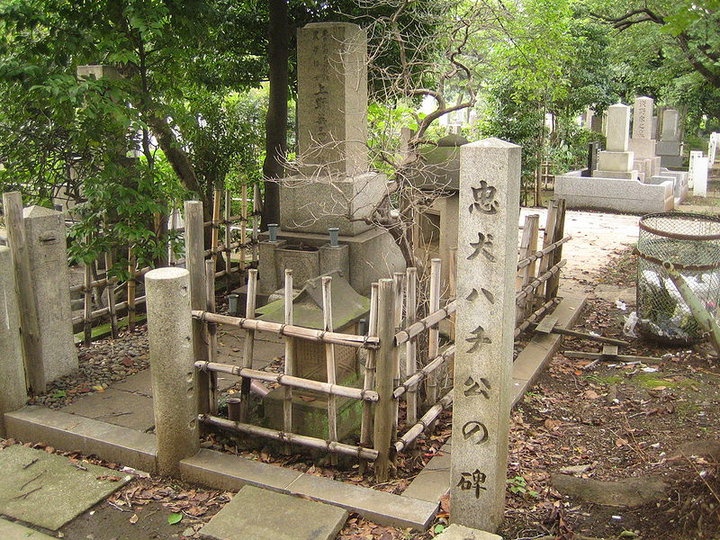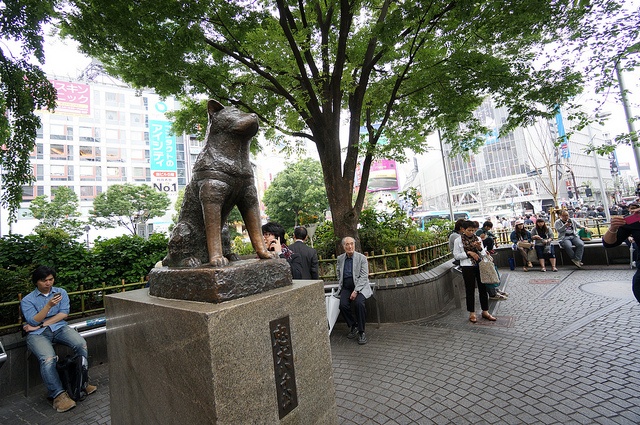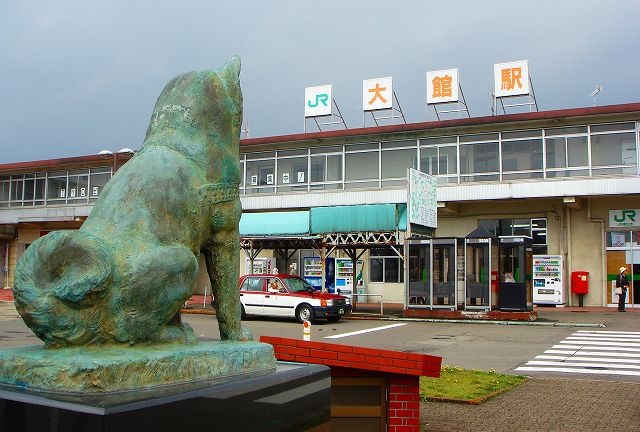The Story of a Sweet Old Dog
Known in Japan as Chuken Hachiko (Faithful Dog Hachiko), Hachi was an Akita dog who famously waiting for his master for nearly 10 years after he died. Nearly a century later, Hachi remains both a synonym for loyalty in Japan and a prominent symbol of Shibuya Station.
By Michael Kanerthttps://www.youtube.com/watch?v=fJxgu8TtIWI
Hidesaburo Ueno (1872-1925) was born in the village of Motomura (now part of Tsu City) in Mie Prefecture. He studied at the University of Tokyo, then known as Tokyo Imperial University, and became a professor in the agriculture department in 1916.
In January 1924, for the price of ¥30, Ueno purchased a golden brown Akita puppy whom he had shipped down from Odate City in Akita Prefecture. He named the puppy Hachi.
Hachi would always see Ueno off at the door of his home in the vicinity of the modern-day Bunkamura concert hall, and was known to even wait for him at the end of the day at Shibuya Station. However, on May 21, 1925, Ueno suffered a cerebral hemorrhage while delivering a lecture and died.

http://harueru01.exblog.jp/12954198/
Hachi was taken in by Ueno's former gardener, but would continue to wait for his old master at the station. While initially seen as a nuisance—shopkeepers didn't want him around, and he was teased by children—Hachi's loyalty was noticed by Hirokichi Saito, a specialist in Japanese dog breeds, who published an article in Asahi Shimbun on October 4, 1932 entitled, "Itoshiya Roken Monogatari" ("The Story of a Sweet Old Dog"). This and a follow-up article in 1933 put Hachi in the national spotlight, garnering the loyal dog the affectionate appellation, "Hachiko."
Rising to fame, Hachi even appeared in the 1934 film Alps Taisho (General of the Alps), and his bronze likeness was erected by Shibuya Station in April 1934, with Hachi himself in attendance. While the original statue was melted down for raw materials during World War II, it was promptly reconstructed in 1948.
Hachi died of natural causes on March 8, 1935, at the age of 11. He had waited for his master for nearly 10 years.

https://en.wikipedia.org/wiki/File:Hachiko%27s_grave_in_the_Aoyama_cemetery,_Minatoku,_Tokyo,_Japan.jpg
A funeral service was held for him at Shibuya station, after which his remains were cremated and buried beside Ueno's in Tokyo's Aoyama Cemetery (pictured above). His fur was stuffed and mounted, and can be seen at the National Museum of Nature and Science in Ueno.
Hachi in Popular Culture
https://www.youtube.com/watch?v=JIbkRGef8kE
Hachi has been featured in books, film and television a number of times. Hachiko Monogatari (1987) stars Tatsuya Nakadai, whom you may recognize (just barely) as Lord Hidetora Ichimonji in Akira Kurosawa's Ran.
https://youtu.be/D5hNhBCqj2o
The American film adaptation, Hachi: A Dog's Tale (2009), starred no less a luminary than Richard Gere, appearing alongside Joan Allen and Jason Alexander.
Hachi Today

http://www.jimpei.net/entry/freehugs-freebinta
Hachi remains the symbol of Shibuya Station. His statue is a common meeting place by Shibuya Scramble, still overshadowing the Starbucks across the street, and the nearest exit is even known as the Hachiko Exit.

http://www33.tok2.com/home/m35rx4/odatesta.htm
A similar statue also watches over Odate Station in Akita, the land of Hachi's birth.
http://www.en.a.u-tokyo.ac.jp/hachi_ueno_hp/hp/
And on March 8, 2015, to honor the 90th anniversary of Ueno's death and the 80th of Hachi's passing, the University of Tokyo's Faculty of Agriculture erected a bronze statue of Ueno and Hachi together again.




